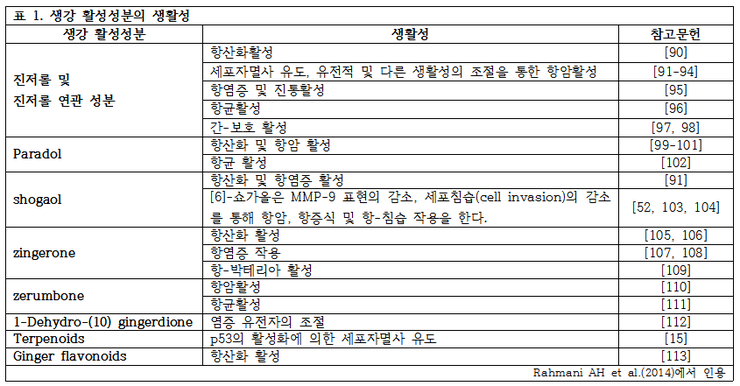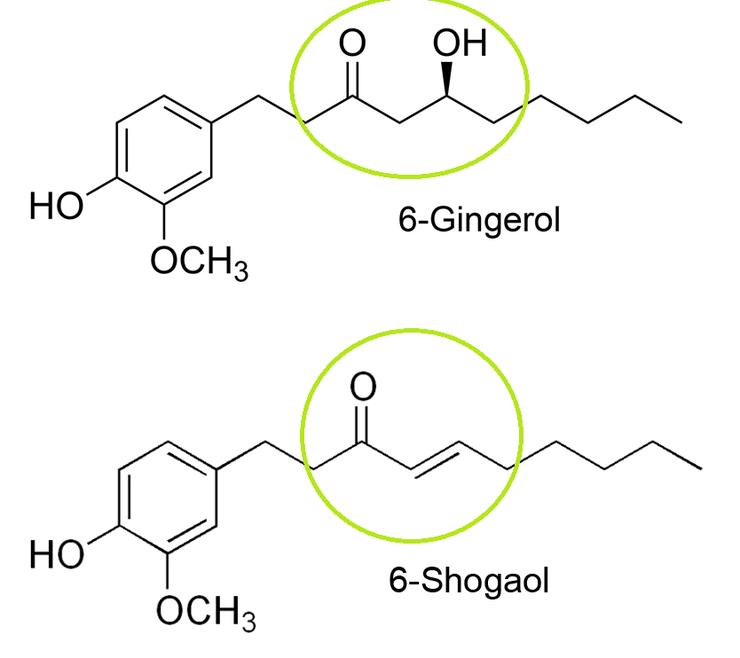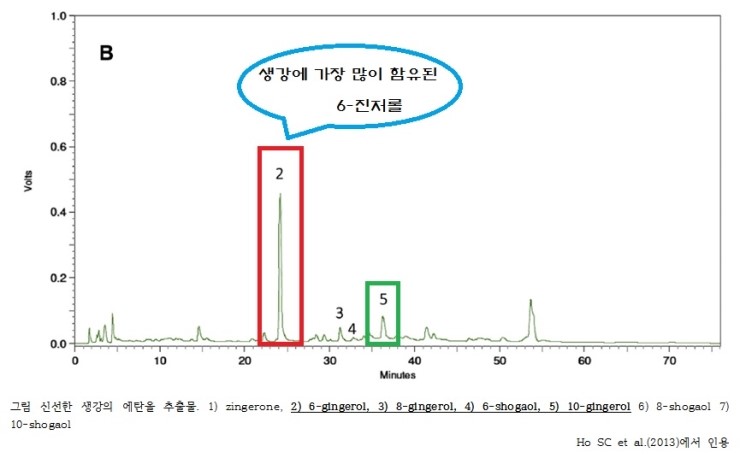구입상담을 원하시면 ↑을 클릭해보세요
현재 생강(링크)에서는 약 400여개의 성분이 분리되었습니다. 생강의 성분은 크게 정유(~1~3%)와 비-정유의 자극성 성분인 oleoresin(non-volatile pungent component oleoresin)으로 나누며, oleoresin에는 진저롤, 쇼가올 등의 성분을 함유하고 있습니다. oleoresin은 이외에도 [6]-paradol; [6]- 및 [10]-dehydrogingerdione; [6]- 및 [10]-gingerdione; [4]-, [6]-, [8]-, 및 [10]-gingerdiol; [6]- methylgingerdiol; zingerone; [6]-hydroxyshogaol; [6]-, [8]-, 및 [10]-dehydroshogaol; 및 diarylheptanoids의 성분을 함유하고 있습니다.




1. Xiao-Lan Cheng et al. Steamed ginger (Zingiber officinale): Changed chemical profile and increased anticancer potential. Food Chemistry 129 (2011) 1785–1792
2. Ho SC et al. Anti-neuroinflammatory capacity of fresh ginger is attributed mainly to 10-gingerol. Food Chem. 2013 Dec 1;141(3):3183-91. doi: 10.1016/j.foodchem.2013.06.010. Epub 2013 Jun 11.
3. Rahmani AH et al. Active ingredients of ginger as potential candidates in the prevention and treatment of diseases via modulation of biological activities. Int J Physiol Pathophysiol Pharmacol. 2014 Jul 12;6(2):125-36. eCollection 2014.(리뷰)
출처 : 사랑채움한의원 블로그
'야초우리' 카테고리의 다른 글
| 우슬 (0) | 2015.11.27 |
|---|---|
| 십전대보탕의 재료종류와 효능 (0) | 2015.11.20 |
| 황기의 성분과 효능 및 활용법 (0) | 2015.11.20 |
| 천궁 (0) | 2015.11.19 |
| 숙지황 (0) | 2015.11.19 |

